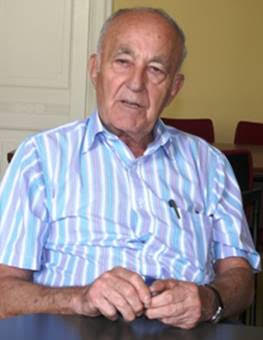
THE VOICE OF INTERNATIONAL LITHUANIA
|
VilNews has its own Google archive! Type a word in the above search box to find any article.
You can also follow us on Facebook. We have two different pages. Click to open and join.
|
Archive for September, 2012
- Posted by - (1) Comment




- Bookmark :
- Digg
- del.icio.us
- Stumbleupon
- Redit it
- Posted by - (1) Comment
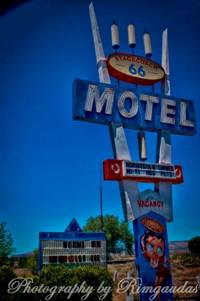
Rimgaudas Vidziunas:
Do any VilNews readers have any memories of traveling Historic Route 66?

Jenifer C. Dillis i vaguely remember selling my soul to the devil at The Crossroads......Sorry. It was pre-Canon days. No photo proof:(

Eric Ember no, but Im a real fan of the show which was broadcast from 1960 through 1963. Ive thought often of buying a 1962 Corvette and retracing the episodes.

Rimgaudas Vidziunas "Route 66" became available on dvd this year. tv series ran weekly on CBS from 1960 to 1964.

Eric Ember I know! I have the DVDs for 1961. Although there were some good episodes after George Maharis left the show, for the most part they seemed to lack the philosophical and cultural underpinnings that were so crisp in the first 2 and one half seasons. My two favorite episodes were The Mud Nest and Good Night Sweet Blues. Living in Baltimore I was able recently to retrace the route and also find some of the locations in The Mud Nest.

Rimgaudas Vidziunas We immigrated to the USA in 1949 settling in Santa Monica. In the early 1950's we traveled Route 66 to our new home in Chicago, Illinois, several years later lived in Lexington, Illinois right on Route 66.

Jon Platakis Had travelled it many times from my home in Chicago. You can see the start of Route 66 in downtown Chicago.

Rimgaudas Vidziunas Thanks Jon Platakis, makes it start in Chicago at the corner of Jackson Boulevard and Michigan Avenue ending in California at Santa Monica Pier.

Frank Passic In April, 1964 I rode with my father out to California the entire length of Rt 66 in a brand new 1964 T-bird. In Southern Illinois we hit a hailstorm and nearby tornado that blew the vinyl adhesive top off the hard top. In AZ a blizzard in the mts. In CA a sandstorm in the Mohave desert that pitted the windshield. By time we got to LA the car was totalled with weather/ sandstorm damage and we sold it and flew back to MI.

Boris Bakunas Never got to travel it. But as a kid, I loved the t.v. show. Thanks, Rim.
http://www.youtube.com/watch?v=R_ykDw-06H8

Sandra Abramovich Have been on small sections of it, primarily in Arizona, but never did the entire route.

Vyto Be did that whole trip before it was (too) hip about '74 and '88. Its probably time to revisit it, but I hear it's too self-consciously touristy now...

Viktorija Ruškulienė I traveled just Illinois and Arizona sections of Route 66.

Richard Vitkauskas I traveled it once when I was 11 years old.. still remember falling in love with the daughter of a motel owner.. ( musta been cause she looked like Annette Funicello).. I can just the imagine the number of places that had to go out of business when the interstate came along.

Boris Bakunas Every kid in Bridgeport was in love with Annette Funicello. Come five o'clock and the streets were empty.
- Bookmark :
- Digg
- del.icio.us
- Stumbleupon
- Redit it
- Posted by - (0) Comment

Russia taking an increasingly nasty tone with Finland
The Finns are expanding their already impressive military might, posing questions for their Nordic neighbours and Russia.
Finland takes its security seriously, which means Finns do not like talking about it much, especially to outsiders. Few realise that a Nordic country of just over 5.3 million people has the biggest artillery force in Europe, for example, and some of the most advanced airspace surveillance. It has top-notch special forces; its cyber-defences are in far better shape than those in most European countries. Finnish military intelligence is as formidable as it is discreet.
Nor does anyone like discussing why. Finnish diplomats like to point out that they have excellent relations with all their neighbours. Yet it is clear that Finnish military planners do not lose any sleep about possible aggression from Estonia, Sweden or Norway. Russia, however, is an uncomfortable neighbour, and has been taking an increasingly nasty tone with Finland this year. Russia's President Vladimir Putin threatened a “tough response” if Finland improved its co-operation with NATO or bought new weapons.
- Bookmark :
- Digg
- del.icio.us
- Stumbleupon
- Redit it
- Posted by - (0) Comment
Edward Lucas:
Finland takes its security seriously
Finland takes its security seriously, which means Finns do not like talking about it much, especially to outsiders. Few realise that a Nordic country of just over 5.3 million people has the biggest artillery force in Europe, for example, and some of the most advanced airspace surveillance. It has top-notch special forces; its cyber-defences are in far better shape than those in most European countries. Finnish military intelligence is as formidable as it is discreet.
Nor does anyone like discussing why. Finnish diplomats like to point out that they have excellent relations with all their neighbours. Yet it is clear that Finnish military planners do not lose any sleep about possible aggression from Estonia, Sweden or Norway. Russia, however, is an uncomfortable neighbour, and has been taking an increasingly nasty tone with Finland this year. Russia's President Vladimir Putin threatened a “tough response” if Finland improved its co-operation with NATO or bought new weapons.
- Bookmark :
- Digg
- del.icio.us
- Stumbleupon
- Redit it
- Posted by - (0) Comment
“The mass graves of Tuskulėnai”
A series of articles in 6 parts
PART 6 OF 6:
THE SECRETS OF
TUSKULĖNAI MANOR
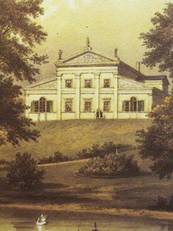 By Vincas Karnila, Associate editor
By Vincas Karnila, Associate editor
vin.karnila@VilNews.com
While the burial place of the victims of the Soviet’s mass murders that occurred from 1944 to 1947 remained one of the secrets of the Tuskulėnai Manor until after Lithuania once again regained their freedom, there are still some other secrets of the Tuskulėnai Manor we would like to share with you along with giving you an idea of the layout of the park.
To read more, go to our SECTION 10
- Bookmark :
- Digg
- del.icio.us
- Stumbleupon
- Redit it
- Posted by - (0) Comment
|
PART 6 OF 6 |
The SECRETS OF TUSKULĖNAI MANOR
In the visitor center building which is located on the grounds of the Memorial Complex of Tuskulėnai Peace Park in the building marked Žirmūnų Gatvė 1N, there is an exhibition entitled “SECRETS OF TUSKULĖNAI MANOR”. While the burial place of the victims of the Soviet’s mass murders that occurred from 1944 to 1947 remained one of the secrets of the Tuskulėnai Manor until after Lithuania once again regained their freedom, there are still some other secrets of the Tuskulėnai Manor we would like to share with you along with giving you an idea of the layout of the park.
TUSKULĖNAI
16th–21st century
The territory in which the Memorial Complex of Tuskulėnai Peace Park is located has been known since the 16th century as the land of the royal manor. Its function was to serve the castles of Vilnius. The Manor featured a large homestead with orchards and ponds. It was called the Derewnictwo Manor. The founder of the Manor was the King of Poland and Grand Duke of Lithuania, Sigismund II Augustus. The family of this ruler had stayed in this suburban Manor on many occasions. In the mid-17th century the Manor lost its royal status and belonged to noblemen such as Wołłowicz, Pac, and Tyzenhauz. The territory was surrounded by vast hunting grounds and crossed by a road for worshippers to Vilnius Calvary. In the second half of the 18th century, the Manor was divided into individual and independent farms. The portion of the homestead which passed to the hands of the monks of the Lateran Chapter began to be called Tuskulėnai, whereas the remaining part of the former Manor was referred to as the Derewnictwo Folwark.
In the early 19th century, Tuskulėnai Manor was managed by Elizabeth, the wife of Rogovsky, advisor to the Russian Tsar. The Manor acquired its current shape around 1825, when it was managed by Vilnius Governor-General Alexander Rimsky-Korsakov. On his instructions the prominent architect Karol Podczaszyński designed the Manor House in the classical style as well as servant quarters (the office). It was also at this time that a park with ponds was established and the central part of the Manor grounds was fenced with a brick wall.
In the 1840s, the Manor was purchased by Julian Titius, a doctor and a public figure, and the place became an important cultural centre for the residents of Vilnius. The Manor House contained a valuable collection of paintings and a rich library. Vilnius intellectuals such as the composer Stanisław Moniuszko, writer Józef Ignacy Kraszewski, and others visited the Manor.
In the second half of the 19th century Tuskulėnai Manor became a part of the city. The final owner of the Manor was the family of Tsarist Army’s general Melentyev.
In the second half of the 19th century, the Derewnictwo Folwark was acquired by General Alexander Losev, an assistant to the Governor General of Vilnius Mikhail Muravyov (known as the Hangman) in suppressing the 1863–1864 uprising in Lithuania. In 1866, he built a hunting lodge on the grounds of the folwark.
In 1928, the Derewnictwo place was purchased by Francyszek Walicki, an engineer from Vilnius, who turned a hunting lodge into a summer residence for his family. The reconstructed building was painted in bright colours and was therefore called the White Manor House. Between 1930 and 1931, the engineer erected St. Teresa’s Chapel here in memory of his parents.
In 1940, after the first Soviet occupation the Tuskulėnai Manor was nationalised. During the Nazi occupation between 1941 and 1944, the Tuskulėnai Manor House belonged to Wincenty and Jadwiga Antonowicz where they hid Jews in cellars.
In 1944, after the second Soviet occupation of Lithuania, the Tuskulėnai Manor and the White Manor House passed to the charge of the NKVD–MVD and NKGB–MGB.
After the re-establishment of independence in Lithuania, mass graves of the participants of the underground anti-Soviet movement executed at Vilnius NKGB–MGB internal prison between 1944 and 1947 or those who perished in Vilnius district were uncovered within the grounds of Tuskulėnai Manor. In order to commemorate them, following the decree of the Government of the Republic of Lithuania dated 2002, the Memorial Complex of Tuskulėnai Peace Park was established. It consists of the chapel-columbarium with the remains from the mass graves, the Tuskulėnai Manor House, the Office, and the park (where boundaries of former mass graves are designated) with the White Manor House and St. Teresa’s Chapel nearby. As objects of cultural heritage all buildings situated on the Memorial Complex of Tuskulėnai Peace Park were inscribed in the Register of Cultural Property.

Photo property of the Memorial Complex of Tuskulėnai Peace Park. All rights reserved
The grounds of Tuskulėnai Manor
The Memorial Complex of Tuskulėnai Peace Park is located in grounds which were royal property in the 16th century. The large territory of the Manor stretched between the road to Verkiai and the River Neris and included buildings for various purposes, orchards, and ponds surrounded by vast hunting grounds.
In the course of time, the Manor lost its royal status and changed hands. The Pieglowski, governors of the Manor in the 17th century, had ponds made, built a residential house and a distillery. At the beginning of the 18th century, the Manor included agricultural land, an orchard, and utility buildings. According to written historical evidence, the Manor also had a unique floating mill. In the second half of the 18th century, the Manor was divided into independent homesteads. The portion of the homestead which passed to the hands of the monks of the Lateran Chapter began to be called Tuskulėnai. It was used for utility purposes. In the second half of the 19th century the territory of Tuskulėnai Manor became part of Vilnius city.
The old buildings of Tuskulėnai Manor sank into a state of disrepair and the functions and image of the territory changed over time. The Manor House that has survived to the present day was built around 1825 as a country-house with a cultural, entertainment, and recreational purpose. It is thought that initially this ensemble built in the classic style was surrounded by a brick wall and that development of a landscape park with small architectural structures was started on the grounds of the Manor House. Round flower beds were planted in front of the main façade of the house with paths stretching from the flower beds. On the lower terrace on the River Neris, there were ponds which later became overgrown with weeds, because the grounds were neglected after nationalisation of the Manor in 1940.
In 1944, the territory of Tuskulėnai Manor together with its buildings passed to the charge of the Soviet repression structures NKGB–MGB. Part of the grounds was only opened to the public in the 70s when the Culture and Sports Building was built for the Ministry of the Interior and a square was laid out. After the re-establishment of independence in Lithuania, mass graves as a result of Soviet executions were identified on the territory of the Manor. In 2002, the Memorial Complex of Tuskulėnai Peace Park was established by combining the grounds of the Tuskulėnai Manor House and the nearby grounds. The buildings of the complex were restored between 2005 and 2008, the chapel-columbarium was built prior to that in 2004, and in 2010 the park was tidied up.

Photo property of the archives of the Department of Cultural Heritage under the Ministry of Culture of the Republic of Lithuania.
All rights reserved.
This photo gives you some idea of how the grounds were just an unkempt field and numerous buildings for industrial use and auto repair had been put up over the years during the Soviet occupation.

This photo from approximatly the same view shows the grounds after restorations.
The Tuskulėnai Manor House
The present Tuskulėnai Manor House was built around 1825 by order of Vilnius Governor-General Alexander Rimsky-Korsakov and is an example of a country-house built in the late classical period. Historical references state that it was designed by Karol Podczaszyński, Professor of Architecture of Vilnius University renowned as one of the proponents of the classical style in Lithuania.

Photo property of the Memorial Complex of Tuskulėnai Peace Park. All rights reserved
The design of the Tuskulėnai Manor House located on the right bank of the River Neris is original. The house is of rectangular shape (Palladian layout), single storey, with a mezzanine and wings on either side with attic area above. The façade of the house is symmetrical of rather reserved shape, decorated with architectural elements.

Photo property of the Memorial Complex of Tuskulėnai Peace Park. All rights reserved
The gables of the central part of the façade facing the River Neris on the east are decorated with stone ornaments with plant motifs and three statues of the mythological goddesses of antiquity, Diana, Juno, and Venus are to be found on the roof. Statues were rarely a decoration of a residential home. The walls and the ceiling of the representational halls of the Manor House were elaborately decorated with classical paintings and the floor was made from parquet panels. Stoves decorated with ornate tiles were used to heat the premises. During the reconstruction carried out at the end of the 19th century, window openings and the entrance were partially moved; the stone ornaments were destroyed together with the sculptures on the gable. After WWII, the Manor House passed into the hands of the Soviet repressive structures NKVD–MVD. It was used, but not looked after and consequently the building lost much of its original appearance.

Photo property of the Memorial Complex of Tuskulėnai Peace Park. All rights reserved
Between 2005 and 2008, the Tuskulėnai Manor House was restored on the basis of historical, iconographic, and architectural research: the structural elements of the building were reinforced, the primary layout of the building was recreated, the classical wall and ceiling paintings were restored, and the eastern façade was decorated with stone ornaments with plant motifs and sculptures of the goddesses of antiquity.


Photos property of the archives of the Department of Cultural Heritage under the Ministry of Culture of the Republic of Lithuania.
All rights reserved.
These photos show the sad state the Tuskulėnai Manor House was in before restoration.
Servant quarters of Tuskulėnai Manor
The construction of the servant quarters started at the same time as the construction of the Manor House – in the first half of the 19th century and was restored and extended at the end of the 19th century. The building today represents the result of the construction that continued for a century. All stages of the construction affected the external appearance of the building.
The building consists of two clearly defined blocks. The older one was built in the classical style and is thought to have been designed by Karol Podczaszyński, the architect of Tuskulėnai Manor House. The brick portion of the building is intended to accommodate servants. The same ornaments are used for this portion of the building as in the Manor House.

Photo property of the Memorial Complex of Tuskulėnai Peace Park. All rights reserved

Photo property of the archives of the Department of Cultural Heritage under the Ministry of Culture of the Republic of Lithuania.
All rights reserved.
Photo of the front of the Servant quarters of Tuskulėnai Manor before restoration.
At the end of the 19th century, a wooden addition was built on the back of the building. It is an original structure and features complex cornices, round semi-columns, and tall windows between the columns. The wide door on both sides of the building indicates that in addition to accommodation for servants, there might also have been premises for a coach house or stables.

Photo property of the Memorial Complex of Tuskulėnai Peace Park. All rights reserved

Photo property of the archives of the Department of Cultural Heritage under the Ministry of Culture of the Republic of Lithuania.
All rights reserved.
This photo shows the condition of the area behind the servant’s quarters before restoration.
In 1940, the Office was nationalised together with the Tuskulėnai Manor House and in 1944 passed into the hands of the Soviet repressive structures of the NKVD–MVD. Later, the spacious premises were divided into many small rooms, whereas the exterior of the building was dwarfed by many additions.
Between 2005 and 2008, the Office of Tuskulėnai Manor was restored, the primary layout of the building, the facades, and architectural elements were re-created. The servant’s quarters’ building now houses the administrative offices of Memorial Complex of Tuskulėnai Peace Park and its address is Žirmūnų Gatvė 1F.
The White Manor House
In 1866, the general of the Tsarist Army Alexander Losev built a hunting lodge near Tuskulėnai Manor. This was a small single storey building with a basement, no specific architectural features, a simple layout and minimal ornamentation.

Photo property of the Memorial Complex of Tuskulėnai Peace Park. All rights reserved

Photo property of the archives of the Department of Cultural Heritage under the Ministry of Culture of the Republic of Lithuania.
All rights reserved.
Photo of the White Manor House before restoration
In 1928, the dilapidated hunting lodge together with the adjacent utility buildings was purchased by Francyszek Walicki, a geodetic engineer and the head of Vilnius Geodetic Agency, from the then owner, Lydia Minakowa. The engineer turned it into a summer residence for his family. The building was reconstructed by replacing the windows, installing a wooden veranda, and connecting water and electricity. A veranda with ornate carvings was built on the eastern side of the building which was painted in bright colours and was therefore referred to by local residents as the White Manor House.
The area owned by the Walicki family, a well maintained orchard, flower beds, and a kitchen garden were planted. An oval flower bed of complex composition was planted on the terrace that was formed on the slope. Specially designed steps for descending to the flower bed were built.
In 1944, after the second Soviet occupation of Lithuania, the White Manor House was nationalised and turned into a summer residence for Soviet Communist Party officials. The building was subsequently used to house a kindergarten for the children of KGB officers and then as apartments for KGB officers.
The White Manor House, address Žirmūnų Gatvė 1N, now serves the function of the park’s information center and also houses the exhibition “The Secrets of Tuskulėnai Manor”.

Photo property of the Memorial Complex of Tuskulėnai Peace Park. All rights reserved
The White Manor House was restored between 2005 and 2008. During the restoration, a valuable 17th century pottery kiln was uncovered.
KILN
In the course of the reconstruction of the White Manor House (the villa of Francyszek Walicki), archaeologists (supervisor Vytautas Urbonavičius) discovered a unique structure – fragments of a kiln. This discovery unveiled the little known world of old pottery craft in medieval Vilnius.
The kiln was used in the second half of the 17th century for firing building materials such as bricks, tiles, floor tiles, and lime. The kiln was square in shape, 6 x 6 m in size. The bottom part of the exhibited kiln – the flame port (flue) – was buried in the ground. Pottery was stacked on the remaining arches. The kiln was used for a long time. After each firing it was thoroughly cleaned and repaired. It has been estimated that 18,000 bricks could be fired at one single time in the kiln. During this period, there were several such kilns in the environs of the White Manor House. The possibility that this brickyard supplied products for the construction of St Peter and Paul Church and the monastery in the vicinity cannot be excluded. Written chronicles state that a ferry across the River Neris was built in 1671 to transport building materials produced by craftsmen of Šnipiškės settlement.

Photo property of the Memorial Complex of Tuskulėnai Peace Park. All rights reserved
The brickyard operated within the grounds of the White Manor House until the late 18th century–early 19th century. A kiln for building materials from this period was identified and later conserved in the northern part of the territory of the Manor House.
The longevity of the ceramics production centre was first of all determined by the large deposits of raw material. It has been said that the Vilnius suburban settlement of Šnipiškės located along the right bank of the River Neris had good quality clay deposits since the earliest times. It is therefore no wonder that as early as the 16th century, when the demand for ceramic building materials grew rapidly, mass construction of kilns in the suburban settlement of Šnipiškės followed.
St. Teresa’s Chapel
Between 1930 and 1931, F. Walicki erected St. Teresa’s Chapel, in memory of his parents, on the grounds of Tuskulėnai Manor, next to the White Manor House. The famous Vilnius sculptor, Piotr Hermanowicz was the building consultant and the interior designer of the chapel. This well-proportioned and very compact chapel is made of the unique pre-war monolith reinforced concrete with decorative elements. A belfry with a gilded cross was erected on the roof of the chapel and covered with ceramic tiles. Inside the chapel, there used to be an oil painting of St. Teresa by Marian Kulesza above the altar and an elaborate chandelier. A recreation area with a bench was erected next to the chapel.


Photo property of the archives of the Department of Cultural Heritage under the Ministry of Culture of the Republic of Lithuania.
All rights reserved.
St. Teresa’s Chapel before restoration
On 31 September 1931, after obtaining a permit from the Roman Catholic Archbishop of the Metropolitan Archdiocese of Vilnius, the chapel was consecrated and inaugurated. Catholics from neighbouring settlements attended Mass here at the weekends.

One of two Angel sculptures on the walls of the Chapel
In 1944, the White Manor House was nationalised, the St. Teresa’s Chapel was abolished and lost its sacral function.

Between 2005 and 2008, the chapel was restored by rebuilding the altar.
The Exposition
“The SECRETS of TUSKULĖNAI MANOR”
Located in the White Manor House is not only the Information Center but also the Exposition
“The Secrets of Tuskulėnai Manor”. The exposition is comprised of four areas.
In the first hall you will find the exposition
“TUSKULĖNAI 16th - 21st CENTURY”
Here you will find archeological and iconographic material that illustrates the history of Tuskulėnai Manor.

Photo property of the Memorial Complex of Tuskulėnai Peace Park. All rights reserved
You will also find a restored 17th century kiln exhibited along with an interactive screen that will walk you through the history of Tuskulėnai from the 16th to 21st century. Great information along with some really incredible photographs.
In the second hall you will find the exposition
“TUSKULĖNAI MASS GRAVES”
Here the process of sentencing to death by the courts of the Soviet Occupation Regime is explained along with copies of actual Russian language documents that were the part of the execution process. The place of burial which the Soviets kept a closely guarded secret is also presented.


Photos property of the Memorial Complex of Tuskulėnai Peace Park. All rights reserved
In this hall you will also find exhibits of the personal belongings of the executed donated by their relatives. You will also find in this hall four interactive screens. The screens display in alphabetical order the victims. As you press each victim’s name the screen shows all available information for that person including photos and the actual Russian documents for their execution.
In the third hall you will find the exposition
“BISHOP VINCENTAS BORISEVIČIUS”
Here you will learn of the spiritual strength and great courage of Bishop Borisevičius in the face of the cruelty of the totalitarian Soviet regime. Included are archival documents from the Bishop’s criminal record, his liturgical clothing, personal belongings and photographs.

Photo property of the Memorial Complex of Tuskulėnai Peace Park. All rights reserved
There is also a video presentation of his reburial ceremony conducted September 1999.
In the fourth hall you will find the exposition
“EXECUTIONS BETWEEN 1944 AND 1947”
Here is a presentation showing the brutal ways those sentenced were killed. There are
archival documents about the executioners and the awards they received for their “good service” are displayed. There is also a video presentation which presents how the Soviet executioners carried out mass executions.

Photo property of the Memorial Complex of Tuskulėnai Peace Park. All rights reserved
I would also like to point out one very striking feature of the exposition. In halls 2, 3 and 4 there are glass floors (please note the photos). Underneath the glass are the shoes of many of the victims illuminated in a soft light. The exposition is excellent. It provides a wealth of knowledge in addition to evoking a wealth of emotions and I can honestly tell you that the shoes of these people, silently sitting in their soft glow, reach out to you and connect to your inner feelings. They are a constant and very sombre reminder of what happened here on the grounds of Tuskulėnai Manor during the years of Soviet oppression.
KGB – rus. КГБ, Комитет Государственной Безопасности – Lith. Valstybės saugumo komitetas – Committee for State Security [of the USSR]
MGB – rus. МГБ, Министерство государственной безопасности – Lith. Valstybės saugumo ministerija – Ministry of State Security [of the USSR]
MVD – rus. МВД, Министерство внутренних дел – Lith. Vidaus reikalų ministerija – Ministry of Internal Affairs [of the USSR]
NKGB – rus. НКГБ, Народный Комиссариат Государственной Безопасности – Lith. Valstybės saugumo liaudies komisariatas – People’s Commissariat for Internal Affairs [of the USSR]
NKVD – rus. НКВД, Народный комиссариат внутренних дел – Lith. Vidaus reikalų liaudies komisariatas – People’s Commissariat of Internal Affairs [of the USSR]
VISITOR INFORMATION
Here is some information that will help when you are planning your visit to The Memorial Complex of Tuskulėnai Peace Park.
Opening hours are:
Wednesday to Saturday 10 am to 6 pm
Sunday 10 am to 5 pm
Closed on Monday and Tuesday
If you want to telephone the Information and Exposition Center at Žirmūnų Gatve 1N their number is +370 5 275 2547
The telephone numbers of the administrative offices located at Žirmūnų Gatve 1F are end_of_the_skype_highlighting
+370 5 275 07 04 and +370 5 275 12 23
Their Email address is
tuskulenai@genocid.lt
They invite you to check out their web site for additional visitor information
www.tuskulenumemorialas.lt/en/
For additional information about the Memorial Complex of Tuskulėnai Peace Park
www.genocid.lt/tuskulenai/en/
NOW IT’S TIME TO SAY THANK YOU
There is quite a long list of people to thank. These are all the people that did so much to help me assemble all this information so that it could be shared with all of you. One thing that I would like to point out is that all of these people, with the exception of one, work for offices of the Republic of Lithuania. Based on the level of professionalism and knowledge these people displayed along with their dedication, ambition and willingness to assist and help, the government of Lithuania should be not only proud but honored to have people like this in their service. I can not remember ever having this much qualified help and assistance with anything. I would also like to add that all of this was combined with wonderful friendly personalities. It was an absolute pleasure to meet all of you.
Now the difficult part is to decide where to begin. I should probably begin with some of the people that helped me so much in the archives.
In the Central Archives of Lithuania there is an incredible lady. I have never seen any one with so much energy and with so much attention to detail. Ramutė I thank you for helping me find all the beautiful photos of Bishop Borisevičius. I also thank you for showing me all those other photos that will be helpful for future stories. In fact those photos are a story in themselves.
I want to thank the Vice Director of the Lithuanian Special Archives, Kęstas Remeika, for his cooperation and his assitance. Dear readers, you have no idea how difficult it was to get much of this information and photos in fact in some cases it was virtually impossible. Mr. Remieka‘s cooperation made the impossible possible.
Also at the Lithuanian Special Archives is Inga. Dear readers please keep in mind that most every document in the Lithuanian Special Archives is written in the Russian cryptic alphabet and I understand absolutely nothing in the Russian cryptic alphabet. It was Inga that came to my rescue. After sorting through document after document, when I came across something that looked like what I needed Inga was person that did all the translating for me. In addition, after she got a better idea of what I was looking for she also helped look for some of the information. Inga I sincerely thank you. I do not know what I would have done if you were not there to help.
I want to thank all the members of the staff of the Museum of Genocide Victims (KGB Museum) for the time they spent with me. The information they provided was most helpful and it allowed me to better understand the events that were taking place during this tragic time in Lithuanian history which allowed me to be better able to organize all the information for these articles. I must also tell you that the staff here at the Museum of Genocide Victims, just like the staff at the Memorial Complex of Tuskulėnai Peace Park, are wonderful people. Every one of them are dedicated to the principle of the museum and are always more than happy to share information.
A big thank you goes to the people at the Castle Research Center “Lietuvos pilys” for allowing us to use their diagram of the excavation sites and I am sure that we would all want to thank them also for their ongoing work at Tuskulėnai.
The photos of the buildings and grounds of the Memorial Complex of Tuskulėnai Peace Park before restorations are courtesy of the Department of Cultural Heritage under the Ministry of Culture of the Republic of Lithuania and we greatly appreciate them allowing us to show them to you.
We would again like to give Dr. Rimantas Jankauskas, Senior researcher for the State Forensic Medicine Service under the Ministry of Justice of the Republic of Lithuania, a Professor in the Faculty of Medicine, Anatomy, Histology and Anthropology Department, at Vilnius University and Senior researcher and Head of Department of Mykolas Romeris University Forensic Institute in Vilnius, our sincere thanks for allowing us to use the photographs of the head wounds and we would also like to say thank you for all the work you have done over the years in an effort to identify the victims and reunite them with their families.
As I said before, all the people on this long thank you list are in one way or another associated with an office of the Republic of Lithuania except one and this is Cate Bird from the Department of Anthropology of Michigan State University in the U.S.A. Cate, I really don’t know how to thank you for all your work at Tuskulėnai. In fact Lithuanians all over the world thank you for what you are doing. Your research to ultimately demonstrate how Soviet-sponsored violence fits within broader narratives of global state-sponsored violence during the twentieth century is truly an honourable endeavour.
Now I have saved for last the people that with out their help this story would have probably been impossible to put together. For all the people at the Memorial Complex of Tuskulėnai Peace Park
Thank you – Ačiū labai - Padėkokite jums – Aitäh – Paldies – Дякую – Dakujem – Dziękujemy
I have said many times in these articles how great the staff is at Tuskulėnai and I need to say it again. They are GREAT. I can honestly say that after every time I met with them or talked with them on the phone I would say to myself that I can’t believe how wonderful and helpful these people are. Please keep in mind that much of the text for these articles was originated by the Tuskulėnai staff. Much of my work was just getting all the material together and organizing it into a story.
I would like to begin by thanking the director of the Memorial Complex of Tuskulėnai Peace Park, Dovilė Lauraitienė, for all her help and support and for allowing me to work with her wonderful staff.
When I first visited Tuskulėnai, the first person I talked to was a very helpful and charming lady by the name of Solveiga Steponavičienė. I told her that I wanted to do a story about Tuskulėnai and she immediately started making phone calls to get people to come to talk with me. She then took me around and started to give me information. It was Solveiga that took me for the first time into the Chapel-columbarium. This first visit to the Chapel-columbarium a most moving and emotional experience and I thank you for taking me there. So as you can see, it was Solveiga that really got the process started for this story to be put together – Ačiū labai Solveiga
There are two historians in the staff at Tuskulėnai, Vytautas Starikovičius and the senior historian Remigijus Černius. These two men are amazing. I have no idea how you two can remember so many details. Not only do they know so much but they also know where everything is. They are like walking computers. Vytautas and Remigijus thank you. Every time I talked with you for ten minutes you probably saved me ten weeks of work.
Now let me tell you about Martynas Striūkas.
The best way to tell you about Martynas is that in spite of all the help I received from so many people, if it was not for Martynas I can honestly say that this story would have never been completed. I have mentioned a number of times that you have no idea how difficult it was to get all this material together and the primary person responsible for helping me get everything was Martynas. He was my contact man with everything and everybody and 24/7 he was my “go to guy”.
Martynas - Nuo mano širdies LABAI AČIŪ
Please look for the conclusion to The Mass Graves of Tuskulėnai
The SUMMARY
Dear readers please keep in mind that we still
WE NEED YOUR HELP
Dear VilNews readers, we need your help. As we have said, the victims that were executed in the NKGB–MGB internal prison in between 28 September 1944 and 16 April 1947 were buried in secret mass graves in the territory of the Tuskulėnai Manor. These victims have been found, their bodies recovered, given the dignified burial they never received and their souls have been blessed by a Holy person of the religion the worshipped.
26 May 1947, following the order of the Presidium of the Supreme Council of the USSR, the death penalty was abolished.
On 12 January 1950, the Presidium of the Supreme Council of the USSR passed a decree re-instating the death penalty. Between October 1950 and July 1952, 182 people sentenced to death were executed at Vilnius NKGB–MGB internal prison.
Their place of burial is still not known.
After July 1952 to 1961 executions continued pursuant to the 1926 Criminal Code Article 58 of RSFSR.
The burial place of these victims is still unknown.
The 1926 Criminal Code Article 58 of RSFSR was terminated in 1961 but executions continued.
The burial place of these victims is still unknown
Dear readers we would like to find where these people are buried, recover their bodies, give them the dignified burial they never received and have them blessed by a Holy person of the Religion they worshipped.
This is where we need your help. The NKVD and NKGB–MGB officers that oversaw these executions are now all dead. What ever records and documents which still exist are most likely locked away in a vault somewhere in the Russian Federation and it would seem highly unlikely that anyone in the Russian Federation would be kind enough allow access to these documents and records so that we could find out the location of the burial sites or simply tell us where these people are buried.
We know that there are people out there that know the location of some of these burial sites. Maybe it is a person that processed the documents, maybe it is some one that was just a rank and file soldier that was ordered to drive the truck that transported the bodies or was ordered to dig the trenches for the graves, maybe it is a colleague of one of these people or maybe it is the bartender that heard some of these people talk of it one night. The possibilities are endless.
Maybe none of these people with first hand knowledge of the burial sites are still alive. In that case we are sure that there are people out there with second hand or even third hand information. To have first hand knowledge of these executions would weigh very heavily on any civilized person’s heart and it is very possible that after carrying this weight inside them for many years they finally felt the need to free themselves from this burden they carried inside and told some one.
If you have any information at all, any information of any kind – Please tell us.
It is not important to us how you know, who it was, what they did or who told you.
None of this is important.
The only thing that is important is that we find where the executed people are buried.
This is all we care about.
What we want to do is best explained in the words from Bronius Eiva’s farewell letter he wrote to his wife while waiting his execution while in the prison of Ukmergės Peoples Commissariat for Internal Affairs.
“Please find out when I was shot or hanged and where they bury me.
Dig me up and take me to Šeta cemetary.”
This is all we want to do – Find where they are buried, dig them up and then give them a proper burial but we can only do this with your help.
All information will be kept strictly confidential
We are not concerned with who or what
We are only concerned with where these people are buried
If you have any information of any kind please contact:
The Memorial Complex of Tuskulenai Peace Park
Žirmūnų Gatvė 1F,
LT-09239, Vilnius
Lithuania
Telephone: +370 5 275 1223
E-mail. tuskulenai@genocid.lt
You can also contact me at vkvilnius-tuskulenai@yahoo.com
We sincerely thank you for your help.
Su pagarbe
Vincas Karnila
- Bookmark :
- Digg
- del.icio.us
- Stumbleupon
- Redit it
- Posted by - (0) Comment
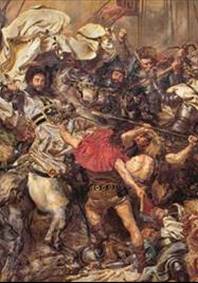
The trampling of
Lithuania’s history
Many Lithuanian historians continually choose not to understand, appreciate, and respect the impact and grandeur of Lithuanian history.
READ this article by Jon Platakis
To read comments, go to our
SECTION 5 – SPEAKERS’ CORNER
Boris Bakunas This article needs to go viral! I shared it on my FB page, and I urge all others to read it and share it as well. Astounding, Jon!
______________________________
Bartłomiej Kolubiński I’m Polish. I have a great respect for the people and Lithuanian history. That’s why, I is not easy to read, that you may treat the 400 years our common history as your occupation. It was the most successful period in the history of our two nations (as always, there were also some difficult issues). Please, visit Krakow. Lithuania-origin kings were living there and created one of the most beautiful cities in Europe. It is mainly, you Lithuanians, who did it.
______________________________
Jon Platakis And I have great respect for the Poles and their history. One must remember, however, that during a half century of Soviet occupation, Poland was given much more freedom than the Baltic states. It is during this period that Poland was able to disseminate their versions of Lithuanian history while Lithuania was wiped off the map. I certainly do not hold the Polish people of today accountable for what happened 5 or 6 hundred years ago, but in some nationalistic Polish circles the subordination of Lithuanian history to Poland exists.
- Bookmark :
- Digg
- del.icio.us
- Stumbleupon
- Redit it
- Posted by - (0) Comment
The trampling of Lithuania’s history
Many Lithuanian historians continually choose not to understand, appreciate, and respect the impact and grandeur of Lithuanian history
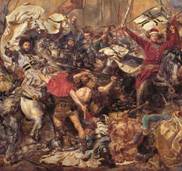 |
An article by Jon Platakis |
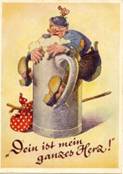 |
Bernard Terway: |
 |
Dr. E. Reilly: |
 |
Jon Platakis: |
 |
B. Kolubinski: |
 |
Vytautas Sliupas: |
 |
Vytautas Sliupas: |
 |
Boris Bakunas: |
 |
Ruta Lee: |
 |
Angele Jureviciene: |
 |
Vijole Arbas: |
- Bookmark :
- Digg
- del.icio.us
- Stumbleupon
- Redit it
- Posted by - (0) Comment
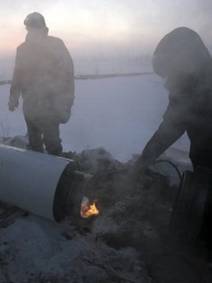
Russia and its Gazprom oil and gas monopoly need to recognize and play by EU rules
Russia and its Gazprom oil and gas monopoly need to recognize and play by the European Union's market rules, EU Energy Commissioner Guenther Oettinger says.
Oettinger made in the remarks Friday in Lithuania, a country entirely dependent on Russian natural gas imports and which is seeking to spin off ownership of its gas transmission network in accordance with the European Union's energy market reform efforts, the Sofia News Agency reported.
Oettinger told attendees to an energy conference in Vilnius the Kremlin needs to "accept our European Union rules" as it comes under fire for allegedly seeking to limit natural gas supplies and artificially raise prices for its European customers.
Gazprom sets its prices under long-term contracts linked to oil prices, and as oil prices have remained stubbornly high, so have the prices it charges for gas. That means national suppliers have to sell the gas to their household customers at lower retail levels.
That situation prompted the European Union to announce this month it had opened formal proceedings to investigate whether Gazprom was obstructing competition in Central and Eastern Europe, which led to a decree from Russian President Vladimir Putin last week banning Gazprom and other state-owned companies from disclosing information to foreign regulators.
- Bookmark :
- Digg
- del.icio.us
- Stumbleupon
- Redit it
- Posted by - (0) Comment
The trampling of
Lithuania’s history
Many Lithuanian historians continually choose not to understand, appreciate, and respect the impact and grandeur of Lithuanian history
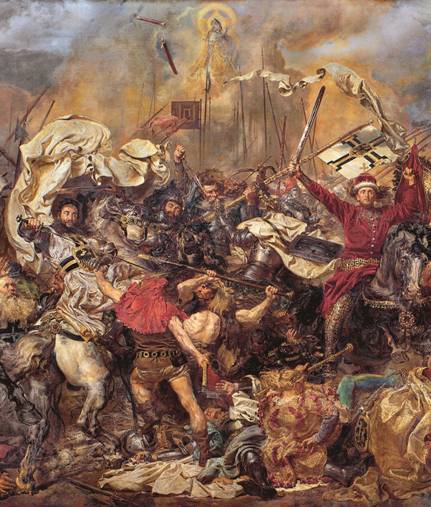
Žalgirio Mūšis (Battle of Tannenberg or Grunwald), fought on 15 July 1410, during the Polish–Lithuanian–Teutonic War, was the most significant, largest, and fiercest battle in medieval European history. It was Lithuania’s Vytautas the Great, the ultimate warrior king, whose strategic and tactical genius ensured victory for Lithuania and its allies.
Detail from a painting by Jan Matejko (1878).
By: Jon Platakis
Over 200 years of foreign occupations left our history suppressed, maligned, and if not stolen outright, then at least borrowed by our neighbors. One browses the internet, or leafs through history books and journals about Lithuania, and immediately notices our great Lithuanian names russianized or polonized; Lithuanian historical events are distorted in many versions, such as, Žalgirio Mūšis (Battle of Tannenberg or Grunwald) where descriptions of Vytautas’ participation is minimized or almost non-existent. It was mostly Lithuanian blood that was shed in this most significant, largest, and fiercest battle in medieval European history. It was Vytautas, the ultimate warrior king, whose strategic and tactical genius ensured victory for Lithuania and its allies (Sven Ekdahl, “The Turning Point in the Battle of Tannenberg-Grunwald/Žalgirio-1410.“ Lithuanian Quarterly Journal of Arts and Sciences, Volume 56, No.2-Summer 2010). This list can go on and on.
- Bookmark :
- Digg
- del.icio.us
- Stumbleupon
- Redit it
- Posted by - (22) Comment
INTRODUCTION
This article is born of a frustrated and infuriated Lithuanian American who has watched and listened to the trampling of Lithuania’s history by its neighbors, and even by some of Lithuania’s own historians, for decades. By writing this article, I hope to encourage and inspire Lithuanians worldwide to discard old notions of the Grand Duchy and its Grand Dukes that have been filtered into our conscience by Lithuania’s former oppressors, and other foreigners.
I would like to thank Richard Vitkauskas, Boris Bakunas, and Angele Juraviciene, for providing some of the information contained in this article.
The trampling of
Lithuania’s history
Many Lithuanian historians continually choose not to understand,
appreciate, and respect the impact and grandeur of Lithuanian history

Žalgirio Mūšis (Battle of Tannenberg or Grunwald), fought on 15 July 1410, during the Polish–Lithuanian–
Teutonic War, was the most significant, largest, and fiercest battle in medieval European history.
It was Lithuania’s Vytautas the Great, the ultimate warrior king, whose strategic and
tactical genius ensured victory for Lithuania and its allies.
Detail from a painting by Jan Matejko (1878).
By: Jon Platakis
Over 200 years of foreign occupations left our history suppressed, maligned, and if not stolen outright, then at least borrowed by our neighbors. One browses the internet, or leafs through history books and journals about Lithuania, and immediately notices our great Lithuanian names russianized or polonized; Lithuanian historical events are distorted in many versions, such as, Žalgirio Mūšis (Battle of Tannenberg or Grunwald) where descriptions of Vytautas’ participation is minimized or almost non-existent. It was mostly Lithuanian blood that was shed in this most significant, largest, and fiercest battle in medieval European history. It was Vytautas, the ultimate warrior king, whose strategic and tactical genius ensured victory for Lithuania and its allies (Sven Ekdahl, “The Turning Point in the Battle of Tannenberg-Grunwald/Žalgirio-1410.“ Lithuanian Quarterly Journal of Arts and Sciences, Volume 56, No.2-Summer 2010). This list can go on and on.
Other ethnic groups, Italians, Greeks, etc., have had hundreds of years to rejoice in their history. We Lithuanians are only now beginning to exit our cocoons and to present ourselves to the world. Even though individual Lithuanians, like actress Ruta Lee, or Dr. Birute Mary Galdikas, one the world’s foremost primatologists, have reached the pinnacle of their careers and have garnered fame and fortune, as a group, we live in relative obscurity. The typical man-on-the-street has little or no familiarity of who or what is a Lithuanian.
So, how do we present our nation and its people to the world? Do we continue to allow foreigners to define Lithuanian history, as has been done for over 200 years? Do we persist in calling the largest and mightiest nation in Europe during the medieval period a Grand Duchy? Should we not demolish the myth that Lithuania only had one king? These are just a few of the questions we must address in order that Lithuania regain its rightful place in world history.
Unfortunately, many of our own Lithuanian historians choose to present our history in a diminished light. In many of our history books Lithuania is referred to as “The Grand Duchy of Lithuania.” One has to ask why. Rome conquered nations, and was called an empire, Persia conquered nations, and was called an empire. Lithuania conquered nations, was the largest and most powerful in all of Europe (a superpower longer in existence than the United States), stretching from the Baltic to the Black Sea, and was called…a Grand Duchy. Primary source documents (Livonian Chronicles, 1372; Petras Dunsburgietis, Prussian Chronicles, and many more) emphatically cite Lithuania as, if not an empire, then at least, a kingdom.
It is incomprehensible why many Lithuanian historians continually choose not to understand, appreciate, and respect the impact and grandeur of Lithuanian history. That appreciation and respect of Lithuanian history appears to reside in historians of other nations, as for example, English historian S.C. Rowell, the author of “Lithuania Ascending: A Pagan Empire Within East-Central Europe, 1295-1345, who unequivocally identifies Lithuania as an empire with Gediminas as its ruler.

Lithuania State Day is a national holiday observed on July 6. On this day, Lithuanians honor the coronation of Mindaugas (above), who became the first king of a unified Lithuania in 1253, bringing the Baltic people together under his leadership. Lithuanians should demolish the myth that Mindaugas was our only king.
Paining by Adomas Varnas, 1952.
Likewise, Lithuanians should demolish the myth that Mindaugas was our only king. Nowhere, will one find a state, with the vastness of Lithuania ruled by no other except a king or emperor. Despite voluminous documentation, i.e., Livonian Chronicles, Prussian Chronicles, correspondence from Popes and Holy Roman Emperors, and even Lithuania‘s mortal enemy, the Teutonic Knights, that recognized Lithuanian kings, many of our own historians do not. Neither kings and queens of England, nor the pagan kings of Norway and Denmark seek, or need the approval of any outside authority to validate their royalty. Emperor Napolean did not require permission to crown himself emperor. Gediminas, for example, carried the official Latin title of, “Gedeminne Dei gratia Letwinorum et multorum Ruthenorum rex.“ “ ...In contemporary Low German, he is styled simply Koningh van Lettowen, mirroring the Latin Rex Lethowye (both “King of Lithuania“) ( Citing British historian S.C. Rowell, 1994).
For those who insist that some foreign authority give its imprimatur to a title of king, consider Vytautas as an example. In January, 1429, Vytautas had already received the title of King of Lithuania, with the backing of the Pope and Holy Roman Emperor, Sigismund. Are we to deny Vytautas’ title as King, simply because he did not undergo a symbolic “crowning” ceremony? Why then, when historical facts and surrounding nations, recognized Lithuanian Kings, many of our own Lithuanian historians do not.
These are but a few examples how we Lithuanians must change our perspective and the outlook others have of our history. After all, what is history but an interpretation of past events. Whichever interpretation garners the most attention and support…voila! It becomes history. We should all keep in mind that history is not static, but constantly evolving as perspectives and interpretations of past events change. Now, this is our time, our chance to present our history in all its epic might, and prevent it from being flung to a dark, dusty corner.
Recently, I have learned of a few Lithuanian historians who appear to dread presenting our history in this positive light, because it might offend some of Lithuania’s neighbors. To them I say, “Historians must interpret and present history based on fact, and not timidity. If one cannot do this, then one is not a historian.”
Lithuania, its history, its culture, and its people, have withstood tyrants and oppressors throughout its history. In recorded annals, Lithuanian history stands second to none. It is now time for us to rejoice and be proud of it, as we present it to the world with renewed vigor.

Comments (10)
Sort by: Date Rating Last Activity
+3
Very good article. I am born of Lithuanian parents and proud to show my Lithuanicity (if there is such a word). I am also a retired teacher. It was always interesting to bring up the subject of Lithuania in my classes. Interesting because a huge percentage of the students, probably 99%, never even heard of Lithuania, unless they were avid basketball fans and knew of the basketball team. I put as much about Lithuania as I could in my classes, so at least the students were made aware of the fact that there actually was a country called Lithuania, there is a distinct Lithuanian language and culture. Living in Texas doesn't make it easy to push the Lithuaian identity - people here don't believe there is anyone or anything other than Texas in the world!
Thank you Jon for this reminder. To this day, I wear my Lithuanian colors, either on a lapel flag pin, a belt buckle with the Lithuanian flag, a t-shirt with Lithuania on it, or maybe even a coffee mug that says "proud to be Lithuanian". EVERYONE in the neighborhood, and everyone I meet knows I am Lithuanian before I leave them.
0
Rimgaudas Vidziunas· 3 days ago
Exceptionally well written! Think we should nominate Jon Platakis, and vote him into the National Lithuanian American Hall of Fame
0
Violeta Rutkauskiene· 3 days ago
Super! Congratulations and Thank You John.
0
![]()
Dr. E. Reilly· 2 days ago
An interesting polemical article. What is needed is a text by an author as authoritative & respected as say, Norman Davies or Robert Conquest, to write a definitive (well researched & documented) text: "The History of the Baltic Nations".
A title such as this would include the histories of the Old Prussians and other pre-state groups, Lithuanians & Žemaičiai, Latgalians & Latvians (I do make a distinction), Livonians & Estonian groups, as well as the lost peoples: but then, one could not exclude immigrants such as the Scots & Irish (weavers), Germans, Swedes, Old Believers & post-WW2 influx.
And then there are the various periods of imperialist aggression from Moskova, Berlin, Karków & even Stockholm to be accounted for.
The region's complexity defies simple narratives and assertions.
1 reply · active 3 hours ago
0
![]()
Jon Platakis· 3 hours ago
English historian, S.C. Rowell has written extensively about Lithuania and the Baltic states during the medieval period, and it would appear that he far exceeds the respect and authoritativeness in this regard of Norman Davies or Robert Conquest.. Rowell's book, "Lithuania Ascending: A Pagan Empire Within East-Central Europe" provided some of the impetus for writing this article.
+1
![]()
B. Kolubinski· 2 days ago
I’m Polish. I have a great respect for the Lithuanian people and Lithuanian history. That’s why, I is not easy to read, that you may treat the 400 years our common history as your occupation. It was the most successful period in the history of our two nations (as always, there were also some difficult issues). Please, visit Krakow. Lithuanian-origin kings were living there and created one of the most beautiful cities in Europe. It is mainly, you Lithuanians, who did it. Please, compare amazing Vilnius to Ryga or Thalin, or to the other cities created by Russians, Germans or Scandinavians for whom the Baltic States were only another territories. You should be proud of your history, our common history. Do Vytautas the Great, pictured in the center of the masterpiece of the Polish painter – Jan Matejko - looks as the Grand Duchy (or King, in a fact) of the occupied nation? No, he looks as a real proud hero, hero of Lithuania and hero of Poland.
0
![]()
Vytautas Sliupas· 1 day ago
To Mr. B. Kolubinski
I do thank you for your expressed welcome and friendly attitude toward Lithuanians, which is so lacking among my Polish acquaintances. On the question of "occupation" I wish to refer you to two books: First one, the 1911 Polish language "Lenku Apastalai Lietuvoje", by Canon (Kanauninkas) K. Prapuolenis. This issue later in 1913 was translated into Lithuanian and several other languages. The second one, the 2011 entitled "Lenku Skriaudu Lietuviams Istorijos Apzvalga", by Dr. Algimantas Liekis.
In 1988 my wife and I visited Warsaw and were so impressed by the magnificent painting of Jan Matejko ,"The Battle of Grunwald", that we commissioned an artist to trace it in outline form on a 2.8x1.3 meter cloth. Subsequently my wife and I spent 15 years embroidering a Gobelin which we donated to the Vytautas Museum in Kaunas on the 600 year anniversary of the battle. It was first exhibited in the Parliament building in Vilnius, then it was moved to Kaunas.
In 1998 we visited Krakow, where at the Jagiellonian University, I researched in the archives for information about my father. Cooperation that I received from the archives' staff was outstanding, for which I am very grateful. The historical City of Krakow, although as you say, city that "was created by Lithuanian-origin kings ... and it is you Lithuanians who did it" unfortunately has very little to show about Lithuanians, except for the King Jogaila (Jagiella).
Regardless of different opinions held, Lithuania and Poland shared a common history. Current readers should be proud of it, but we still need to retain our individual heritages.
0
![]()
Vytautas Sliupas· 1 day ago
To Dr. E.Reilly
I agree with your suggestion on the need of inviting authoritative and respected authors to write a well documented text on the "Baltic Nations". Back in 1988-89 I corresponded with Dr. Norman Davies, author of "Poland: God's Playground", and asked to write a similar book about Lithuanians. In his original book a large portion dealt with Lithuanian history. He was agreeable to that task. However, in spite of him having a thorough research already done, he wanted to be hired at an "astronomical" salary, which was beyond our means.
Later I met with Dr. Robert Conquest at the Stanford University, and inquired about a similar possibility. Unfortunately, at that time, he was working on a book about the Soviet secret police, and could not find time for another task.
0
![]()
Boris Bakunas· 15 hours ago
To Mr. B. Koblunski:
First, let me acknowledge your appreciation of Lithuanian-Polish cooperation in establishing the one of the most powerful states in Europe during the 16th and early 17th centuries. Currently, Lithuania and Poland are again partners and allies in the European Union and NATO. I hope that this cooperation between two neighboring countries whose histories were intertwined for several centuries continues in an atmosphere of mutual respect and tolerance.
I do want to point out that nowhere in his article does Mr. Platakis "treat the 400 years of our common history" as a period of Polish occupation. If you read the article again, you will note that Mr. Platakis limits the period of foreign occupation to "200 years," and not 400 as you have written.
The first partition of the Polish-Lithuanian Commonwealth occurred in 1772. The most recent occupation of Lithuania by Nazi Germany and the Soviet Union began in 1940 and ended in July of 1991. During the inter-war period, the Vilnius, the capital of Lithuania, and its surrounding region was occupied by Poland. Taken together, these occupations add up to just over 200 years of foreign occupation. Today the government of Poland recognizes Vilnius as the capital of Lithuania, so there really is no reason for further territorial conflict between our two neighboring countries.
However, as Vytautas Sliupas points out, the attitudes of Individual Poles differ in regards to Lithuania. Several of my Polish friends and acquaintances, on learning that I am Lithuanian, immediately remarked that Vilnius was a Polish city. One who grew up and was educated in Poland even said that in the Polish schools he attended during the Soviet occupation of Poland, he was taught that the signers of the Lithuanian Declaration of Independence in 1918 couldn't even speak Lithuanian.
Comments like these, as well as expressions of anti-Polish sentiment by Lithuanians, do neither of our countries any good. So I ask you to carefully read Mr. Platakis' article again in a detached way, and you may see that it is directed an audience of Lithuanians, particularly Lithuanian historians who uncritically accepted distortions of Lithuanian history made by several foreign historians.
Dr. Boris Vytautas Bakunas, M. A, M. Ed., Ph. D.
0
A beautiful soul, mind, heart and eyeful of information......as are the commentaries!
Many Thanks for opening the subject of LITHUANIA to the world!
With admiration
Ruta Lee
Rimgaudas Vidziunas Exceptionally well written! Think we should nominate Jon Platakis, and vote him into the National Lithuanian American Hall of Fame
Saturday at 1:06am · Like · 1
Jon Platakis Maybe postumously...LOL
Saturday at 2:54am via mobile · Like · 1
Bartłomiej Kolubiński I’m Polish. I have a great respect for the people and Lithuanian history. That’s why, I is not easy to read, that you may treat the 400 years our common history as your occupation. It was the most successful period in the history of our two nations (as always, there were also some difficult issues). Please, visit Krakow. Lithuania-origin kings were living there and created one of the most beautiful cities in Europe. It is mainly, you Lithuanians, who did it. Please, compare amazing Vilnius to Riga or Thallinn, or to the other cities created by Russians, Germans or Scandinavians for whom the Baltic States were only another territories. You should be proud of your history, our common history. Do Vytautas the Great, in enclosed picture of Polish painter – Jan Matejko - looks as the Grand Duchy (or even King, in a fact) of the occupied nation? No, he looks as a real proud hero, hero of Lithuania and hero of Poland.
Sunday at 10:35am · Like · 2
Jon Platakis And I have great respect for the Poles and their history. One must remember, however, that during a half century of Soviet occupation, Poland was given much more freedom than the Baltic states. It is during this period that Poland was able to disseminate their versions of Lithuanian history while Lithuania was wiped off the map. I certainly do not hold the Polish people of today accountable for what happened 5 or 6 hundred years ago, but in some nationalistic Polish circles the subordination of Lithuanian history to Poland exists. Let's just take a couple of examples, of which their are many. Other nations at the time recognized Jogaila as King of Poland, and King of Lithuania (based on stamps from legal documents and correspondence). However, in Poland he was listed as King of Poland, and Grand Duke of Lithuania. The purpose of this was to not give Lithuania an equal standing with Poland as a kingdom. Another example of how pervasive the idea of Lithuania just being a vassal state of Poland is the fact that Vytautas was given title of King by the Pope and Holy Roman emperor. However, his crown had to be transported through Poland, and never reached Lithuanian borders. Let us also look at the Battle of Grunwald (Zalgiris or Tannenberg). Polish historians, Jan Dlugsz and Zbigniew Olesnicki, revered Polish historians of the time, painted the Lithuanians during the battle as cowards. But, in fact, it was Vytautas who placed his troops at risk, as evidenced by the majority of the casualties that were Lithuanian. There was no accounting that Vytautas' strategy and tactics during this epic battle is what led to Lithuania and its allies to victory over the Teutonic Knights. One also reads history books about Poland, and the fact that Poland's "Golden Age" began with the Jagiellonian dynasty However, nowhere do we see that the progenitor of the Jagiellonian dynasty, was Lithuania's Gediminas. It is interesting that Jogaila, the grandson of Gediminas, took over the Polish throne by marrying Jadvyga, heir to the Polish throne, who was not even Polish. During the Lithuanian/Polish Commonwealth years, these two nations were powerful and accomplished much. But one must remember that Lithuania was always an independent nation, never subordinated to Poland.
Sunday at 7:16pm · Like · 3
Bartłomiej Kolubiński Thank you for your detailed answer. You perfectly sum up this topic, writing that “Lithuania was always an independent nation, never subordinated to Poland”. This has been always the obvious historical fact for me and, believe me, also for the vast majority of Poles. That is why it’s hard and quite painful to understand why many Lithuanians call that historical period as “occupation” and compare the role of Poland in the Lithuanian history to the role of Russia or Germany. If you look at the serious historical books published in Poland after 1989 (not in the XV century, as Jan Dlugosz) you won’t find a single point which may reduce the importance of Lithuania during the Commonwealth years. In our schools, the picture of Vytautas is on nearly every page of history textbook when the Battle of Grunwald is described. Yes, we (most probably Polish aristocrats) stole the Vytautas crown. Yes, we probably did several other unfair things to Lithuania during that years. But, now, when Lithuania and Poland has a unique opportunity, after long years of German and Russian occupation, to communicate to each other in our own words; let’s do not create the “new” history of Commonwelth, and do not let nationalists from both countries to do so. The President of Lithuania Dalia Grybauskaite, standing by Polish President Bronislaw Komorowski on the fields of Grunwald in 2010 correctly declared: “This victory reminds us, how much we are able to achieve when we are together”, and this is the best description of our Commonwealth years and hopefully the direction for the future.
Sunday at 8:29pm · Like · 1
Jon Platakis Bartolomiej, my only point is that the proud history of Poland is much better known than that of Lithuania's, and I, and I hope many other Lithuanians will start to take pride in a history that stands with the great nations and cultures of the past. I agree with you that it is important to live in harmony and mutual respect with all our neighbors.
Yesterday at 1:38am · Like · 2
Boris Bakunas To Mr. B. Koblunski:
First, let me acknowledge your appreciation of Lithuanian-Polish cooperation in establishing one of the most powerful states in Europe during the 16th and early 17th centuries. Currently, Lithuania and Poland are again partners and allies in the European Union and NATO. I hope that this cooperation between two neighboring countries whose histories were intertwined for several centuries continues in an atmosphere of mutual respect and tolerance.
I do want to point out that nowhere in his article does Mr. Platakis "treat the 400 years of our common history" as a period of Polish occupation. If you read the article again, you will note that Mr. Platakis limits the period of foreign occupation to "200 years," and not 400 as you have written.
The first partition of the Polish-Lithuanian Commonwealth occurred in 1772. The most recent occupation of Lithuania by Nazi Germany and the Soviet Union began in 1940 and ended in July of 1991. During the inter-war period, the Vilnius, the capital of Lithuania, and its surrounding region was occupied by Poland. Taken together, these occupations add up to just over 200 years of foreign occupation. Today the government of Poland recognizes Vilnius as the capital of Lithuania, so there really is no reason for further territorial conflict between our two neighboring countries.
However, as Vytautas Sliupas points out, the attitudes of individual Poles differ in regards to Lithuania. Several of my Polish friends and acquaintances, on learning that I am Lithuanian, immediately remarked that Vilnius was a Polish city. One who grew up and was educated in Poland even said that in the Polish schools he attended during the Soviet occupation of Poland, he was taught that the signers of the Lithuanian Declaration of Independence in 1918 couldn't even speak Lithuanian.
Comments like these, as well as expressions of anti-Polish sentiment by Lithuanians, do neither of our countries any good. So I ask you to carefully read Mr. Platakis' article again in a detached way, and you may see that it is directed an audience of Lithuanians, particularly Lithuanian historians who uncritically accepted distortions of Lithuanian history made by several foreign historians.
Dr. Boris Vytautas Bakunas, M. A, M. Ed., Ph. D.
15 hours ago · Like · 3
Vijole Arbas Thank you -- I would appreciate a campaign to convince the tour guides at Wawel Castle in Krakow to pronounce and expoud -- King of Poland and Lithuania -- they keep on forgetting our Republic of Two Nations
10 hours ago · Like · 1
Bartłomiej Kolubiński To Mr Boris Bakunas
Let me apologize to Mr Platakis. You are right that nowhere in this article, Mr Platakis is referring to the 400 years of occupation. Writing that, I combined the article and one of the comments published underneath (Dr. E. Reilly wrote: “And then there are the various periods of imperialist aggression from Moskova, Berlin, Krakow & even Stockholm to be accounted for.”). I should have been more precise.
Please, treat the opinions of your Polish friends that “Vilnius was the Polish city” in the positive and tolerant way. We sometimes call Vilnius a Polish city, not to offend you and obviously not to start any territorial conflict, but to stress out that this city has a very special place in our Polish inheritance. We cannot just blank it out. That is why, I’m so happy to see today beautiful Vilnius as a capital of Poland’s best and natural ally – Lithuania.
Bartłomiej Kolubiński To Ms Vijole Arbas
I fully agree, if any guide at Wawel Caste is saying that, he/she should be more educated. I will pay my attention to that when I am next time in Krakow. Nevertheless, it’s a general question how our two nation should preserve our common history. Visiting both Vilnius and Krakow by the every teenager, as a integral part of the history lessons, should be a good starting point, and good investment for the future.
Prieš 4 val. · Edited · 1
- Bookmark :
- Digg
- del.icio.us
- Stumbleupon
- Redit it
- Posted by - (0) Comment
Main events in
Lithuania’s history
(based on “The official gateway of Lithuania”, Government of
Lithuania website, adopted and modified by dr. S. Backaitis)
The first settlers arrived at the eastern shore region of the Baltic Sea in approximately 12,000 B. C. In 3,000–500 B. C., the Indo-European Balts came to live here. Between the 5th and 8th centuries tribal groupings in the western territories included: Prussians, Yotvingians, Curronians, Zemgalians, Lithuanians and Latgalians. In the 10th century the pagan Baltic tribes became the target of christianization by Western Europe. In 1009, the name of Lithuania was mentioned for the first time in the written account of the mission of St. Bruno in Quedlinburg Annals.
- Bookmark :
- Digg
- del.icio.us
- Stumbleupon
- Redit it
- Posted by - (1) Comment
Main events in
Lithuania’s history
(based on “The official gateway of Lithuania”, Government of
Lithuania website, adopted and modified by dr. S. Backaitis)

PRE-HISTORY OF LITHUANIA
The first settlers arrived at the eastern shore region of the Baltic Sea in approximately 12, 000 B. C. In 3,000–500 B. C., the Indo-European Balts came to live here. Between the 5th and 8th centuries tribal groupings in the western territories included: Prussians, Yotvingians, Curronians, Zemgalians, Lithuanians and Latgalians. In the 10th century the pagan Baltic tribes became the target of christianization by Western Europe. In 1009, the name of Lithuania was mentioned for the first time in the written account of the mission of St. Bruno in Quedlinburg Annals.

Baltic tribes - circa 1200 AD

Lithuania (Litua) mentioned in the Quedlinburg Annals in 1009
CONSOLIDATION AND CHRISTINIZATION
Early Second Millenium
The first major battle known in Lithuanian as Saulės mūšis was fought on September 22, 1236 between the Livonian Brothers of the Sword and pagan Samogitians. The Sword-Brothers, the first Christian military order established in the Baltic lands, were soundly defeated and its Grand Master, Volkwin killed. The remnants of the Order incorporated into the Teutonic Knights Order in 1237. The defeat ended forever some thirty years' worth of conquests by the Livonian brothers of the Sword on the south bank of the river Daugava. The defeat inspired rebellions among the Curonians, Semigallians, Selonians, and Oeselians tribes previously conquered by the Sword-Brothers.
Lithuania, as the Grand Duchy (Magnus Ducatus Lithuaniae), was first noted in documents, with Mindaugas coronation as the king. He consolidated a number of Lithuanian related tribes and was crowned on July 6,1253. The Papal Bull granted Lithuania the highest title of monarchy, which meant that the pagan country was recognized and accepted into the family of Europe’s Christian nations as kingdom. However, Mindaugas was assassinated in 1263, the monarchy disintegrated and the people reverted to paganism.
Upon several decades of internal feuding, Gediminas (1316-1341) emerges as king of pagan Lithuanians and many Russians and as Duke of Zemgalians. Under his rule Lithuania grew strong. He chose Vilnius as Lithuania’s capital, and invited artisans and learned people from other parts of Europe to come and build the city. With the campaign of Gediminas into the lands of Kiev and Volhynia (1320–1321), the Jewish inhabitants of these territories were invited to come and bring their skills to the northern provinces of the Grand Duchy of Lithuania.
While Gediminas was in power, Lithuania expanded east and south into what are now the lands of Belarus and Ukraine. However, Lithuania as a pagan nation was facing a growing threat from the Teutonic Order, a military organization of German knights, who crusaded by sword to christianize the pagan population of the eastern Baltic region.
In 1363 Gediminas' son Grand Duke Algirdas soundly defeated the Golden Horde in the Battle of Blue Waters liberating Kiev from the rule of Tatars and ending their threat to Western Europe.
In 1377 Jogaila, the grandson of Gediminas and the son of Algirdas, became the Grand Duke of Lithuania. In 1381 he was forced by his uncle Duke Kestutis to flee Vilnius, declaring himself as the Grand Duke of Lithuania. However, in 1382 Jogaila seized power in Vilnius while Kestutis was away. He captured Kestutis, who was subsequently assassinated in captivity. His son Vytautas escaped.
In 1386 Grand Duke Jogaila married Jadwiga the teenage queen princess of Poland. The Polish Sejm (parliament) elected Jogaila as the king of Poland. Jogaila accepted Christianity, and most of his subjects in Lithuania were induced, many times by threat of death, to convert to the king’s religion.
Inasmuch as Jogaila was based in Poland and was too distant to rule Lithuania effectively, he made peace with Vytautas in 1392. Vytautas (1350-1430) assumed the title of the Grand Duke of Lithuania on the condition of his allegiance to and support of Jogaila.
With the official adoption of Christianity in 1387, Lithuania followed the Western path of development. In the years following, Lithuania saw the spread of written language, opening of schools, and Lithuanian students travelling to study at European universities.
MIDDLE AGES
From the Baltic to the Black Sea
An important victory in the Battle of Žalgiris (Grünwald-Tannenberg) in 1410 was achieved by the allied forces of Lithuania and Poland. The Order of Teutonic Knights was decisively defeated. After the war, the Grand Duchy of Lithuania under Grand Duke Vytautas reached the peak of power, with its territory stretching from the Baltic to the Black Seas and from the borders of Poland to Smolensk. It emerged for the next century and a half as an important political power in Eastern and Central Europe, thwarting the expansion of the Muscovites from the east and the Tatars from south.. The success of the expansion of the Grand Duchy of Lithuania was essentially based on ethnic and religious tolerance and protection from external enemies. A charter of privileges, which was momentous in the subsequent history of the Jews of Lithuania, was granted by Grand Duke Vytautas, first to the Jews of Brest (July 1, 1388) and later to those of Trakai, Grodno (1389),
Lutsk, Vladimir, and other large towns.

Grand Duchy of Lithuania in the 13th-15th Centuries
Lithuanian Statutes and First Constitutional Document in Europe
The Lithuanian Statutes were developed in early 16th century to serve as the legal framework for the Grand Duchy. The legal thought reached further heights at the end of the 18th century when a Constitution of the Commonwealth was adopted on 3 May 1791. It was the first constitution in Europe (preceding the French Constitution), and the second in the entire world.
The Oldest University in Eastern Europe
The beginnings of higher education in Lithuania go back to 1579, the year of founding of the Vilnius University as the Jesuit academy. Its foundation was the most significant event in the cultural life of the 16th century Lithuanian Grand Duchy, bearing high political importance. Vilnius University was the first higher school of education not only in the Grand Duchy of Lithuania, but also in the whole of Eastern Europe

The Vilnius powers university
The Demise of the Commonwealth
To thwart the threats from rising powers of Sweden and the Duchy of Moscow, Lithuania entered in 1569 into a commonwealth union with Poland, which lasted until the very end of the 18th century. As a member of the Commonwealth, Lithuania retained its institutions, including a separate army, currency, and statutory laws. The Commonwealth up to the end of the 16th century was one of the largest kingdoms in Europe. However, the ruling Jagiellonian dynasty gradually lost control over the affairs of state to the more and more power seeking and self-serving nobility. After the death of king Zygimantas Augustas in 1573, the last of the Jagiello dynasty, the Polish-Lithuanian Commonwealth became an elective monarchy, a quasi-democratized nearly an ungovernable state.
The once powerful Commonwealth, incapable of controlling the feuding regional nobility, gradually lost the ability fight off the growing power and destructive invasions of neighboring kings. The demise was further amplified by a nearly a century lasting black plaque which wiped out more than half of the Commonwealth’s population. The Commonwealth began to seriously disintegrate in the latter part of the 17th century and was finally partitioned by Prussia, Russia and Austria in 1795.
LATTER PART of the SECOND MILLENIUM
Lithuania Under the Czarist Rule
Upon the third and final partition in 1795, the Commonwealth of Poland and Lithuania ceased to exist. Lithuania was annexed by Russia. In 1830, the Poles rebelled against the Russian rule and in 1831 the uprising spread to Lithuania. However, the Russians crushed the uprising within a year. In 1863 the Poles and the Lithuanians rose once more against the occupiers, but again they were defeated and brutally dealt with. Each rebellion was followed by severe repressive measures such as mass hangings, deportations, prohibition of Lithuanian schools and Latin print, as well as prohibition of public use of Lithuanian language. Russian orthodox religion was given preference over the Catholic Church in all walks of public life. Lithuanians, in hundreds of thousands, escaped Russian repression by emigrating to North America. Similarly, many thousands of Jews of the former Grand Duchy of Lithuania, calling themselves Litvaks, left for South Africa, North America, Australia, Brazil, Zimbabwe, Israel, etc. They formed strong communities around the world and hold top positions in politics, economy, arts and sciences, culture and society in general. They often lead in creativity and innovations that affect and influence the world we live. Their names are frequently found among the Nobel laureates and in many other honorable contexts.
Inspite of these oppressive Russian measures, there was a growing interest in Lithuania in its culture and history and the quest to be free of foreign intrusion. At that time nationalism was a growing force in Europe, and there was little the Russians could do to impede this development.
Book Smuggling – the Nineteen Century Phenomenon
Book smuggling emerged as resistance to the repressive actions of tsarist Russia authorities against the use in public of the Lithuanian language, the ban of Lithuanian books in Latin script and encouraging the population to accept the Russian Orthodox faith. Book smuggling activities involved the printing of books, mostly in the then Prussia (Lithuania Minor) and the United States of America, carrying them illegally into the occupied country and distributing them to the population. Though book smuggling was done mostly by ordinary peasants, this cultural movement, which was a reflection of the national quest for freedom, paved the way for the restoration of Lithuania‘s independence in 1918. This quest of preserving national identity, has retained great importance to this day. Inasmuch as book smuggling is often regarded to be Lithuania’s unique historical phenomenon of the 19th century, the UNESCO named it in 2004 as unique and unprecedented phenomenon in the world.
1918–1940: Period of Independence and Nation Building
On 16 February 1918, twenty courageous, determined and trusted representatives of the Lithuanian nation signed the Act of Independence “re-establishing an independent state, based on democratic principles, with Vilnius as its capital city, severing all previous links with other states.” Having withstood the fight for independence against Bolshevik and Polish invaders, Lithuania adopted parliamentary democracy in the Constituent Assembly (Steigiamasis Seimas) on May 15, 1920. Poles, breaking political and military agreements, seized on October 9, 1920, Vilnius and a sizeable part of eastern Lithuania. Kaunas became Lithuania’s provisional capital. In 1923 Lithuania exercised its claim over the Klaipeda (Lithuania minor) region by expelling the French military administration.
The historical tragic flight by American Lithuanians Steponas Darius and Stasys Girėnas, who were among the first ones in the world to fly a propeller plane in 1933 across the Atlantic from the New York city to the middle of Europe, and Lithuania’s win of the basketball championship of Europe in 1939, became national symbols of patriotism and pride in the young nation’s great achievements. The principles developed during this period such as the rule of law, civic society, cultural and historical values, national solidarity, drive for scholastic excellence and flourishing agriculture, helped Lithuania survive as a nation the subsequent 50 years of Soviet Russian occupation. In subsequent years of communist rule, these values served as ideological basis for resistance and restoration of Lithuania’s independence in 1990.

The signatories of Lithuania’s independence in 1918
Nazi Germany and Lithuania
Lithuania conducted in 1934-5 the first NAZI trial in Europe and defied Hitler’s threats of vengeance. In March 1939, a long-running dispute between Lithuania and Germany over the jurisdiction of the Klaipeda region came to a head when Hitler demanded that Lithuania gives up the region or face Nazi Germany invasion. Lithuania, failing to receive support from either USSR or Western European powers, gave in to the ultimatum. On March 22, 1939, Hitler triumphantly arrived in Klaipeda and declared victory.
Soviet Occupation and Annexation into USSR
In August 1939, under the Molotov-Ribbentrop pact, Hitler and Stalin agreed to carve up Central and Eastern part of Europe. The Baltic states were relegated under this agreement to the Soviet sphere of influence. Upon Soviet occupation of eastern part of Poland, Moscow returned Vilnius to Lithuania as a condition of stationing several isolated military garrisons on Lithuania’s territory. However, eight months later, USSR forcibly occupied Lithuania in June 1940 and formally annexed it as a Soviet republic in August 1940. Lithuania’s state structure was dismantled, followed by mass arrests, killing of politically unreliable, and began large scale deportations of the population to Siberia.
World War II and Subsequent Period June 1941
On June 22, 1941 Germany invaded USSR and as a result, it occupied all of the Baltic states. It imposed a military rule and political governance by Nazi powers from Berlin. Attempts by Lithuanians to restore their independent state was squashed within several weeks of occupation and their principal proponents were arrested and sent to concentration camps. The occupying Nazis and their local henchmen killed most of the 240 000 Lithuanian Jews.
Upon defeat of Nazi Germany in 1945, the Soviet Union reoccupied the Baltic states. Lithuania was restored as a Soviet Socialist Republic of the USSR. From 1945 through 1950s the Soviet authorities implemented deportations of several hundred thousands Lithuanians to remote areas of the USSR, mostly to northern Siberia slave labor camps (gulags). While more than half of the deportees perished, a number of survivers after enduring inhuman hardships in forced labor camps for some 20 and more years, returned to their homelands. During these turbulent years, thousands of the younger Lithuanians joined resistance groups to fight the communist occupiers for the country‘s independence. The period of the fight for freedom resulted in more than 30,000 deaths. It is one of the most dramatic, tragic but heroic events in Lithuania‘s history.
The Singing Revolution
The Initiative Group of Sąjūdis (Lithuanian Reform Movement), established in June 1988, inspired the nation with faith to quest for independence. Subsequently in 1989, the Lithuanian Communist party broke away from the Central Communist Party in Moscow, which was an unprecedented and very dangerous move at the time.
On August 23, 1989, the Estonians, Latvians and Lithuanians in a mass rally joined hands to form a human chain stretching some 650 kilometers from Vilnius through Riga to Tallinn The event marked the 50th anniversary of the Molotov-Ribbentrop Pact, as a result of which the Baltic nations lost their independence. The Baltic Way was a symbolic expression of final separation of the people of the Baltic States from the Soviet Union. Seeing this danger, the Soviet leader Gorbachev came to Vilnius to persuade the Lithuanians to stay within the USSR. The nation refused. On March 11, 1990, the independence of the Republic of Lithuania was officially restored.
On January 13, 1991, Moscow sent to Vilnius its well trained and heavily armed OMON paratrooper units to quell the peaceful quest of the people for freedom. But even under armed attack, the Lithuanian people as well as the Latvians and Estonians responded to aggression peacefully - without use of arms, singing songs of freedom in mass gatherings with an endless and persistent faith in victory. During the military’s crackdown, 13 peacefully protesting civilians were killed in Vilnius. On February 4, 1991, Iceland became the first country to recognise Lithuanian independence. However, only after the old communist coup in Kremlin failed, the Soviet Union recognized the independence of the Baltic states on September 6, 1991, followed by world wide recognition and acceptance of Lithuania as member of the United Nations on September 17, 1991. As the Soviet Union began to disintegrate, Russia agreed to withdraw former Soviet occupation troops from Lithuania's territory in September 1992.

The Baltic Way - Human Chain 600 km Long Linking the
Three Baltic States in Their Drive for Freedom
EU AND NATO MEMBERSHIP
Following its EU and NATO membership in 2004, Lithuania was again reintegrated into the European family of nations. Once an EU member, Lithuania has become an official contributor country giving aid in the quest for freedom to Belarus, Ukraine, Moldova, South Caucasus, Afghanistan and Iraq while also fulfilling its multilateral obligations within the EU and NATO structures.
- Bookmark :
- Digg
- del.icio.us
- Stumbleupon
- Redit it
- Posted by - (0) Comment
 Gediminas – King of
Gediminas – King of
Lithuania & Russians

Gediminas' Tower (Gedimino pilies bokštas) is the only remaining part of the
Upper Castle in Vilnius. The first fortifications were built of wood
by King Gediminas. Later the first brick castle was completed
in 1409 by Vytautas the Great.
Gediminas (1275 - 1341) was the one founding Vilnius as the capital of Lithuania. In works of history Gediminas is referred to as the Grand Duke of Lithuania, but he called himself, and was titled in all official documents, the King of Lithuania, or the King of Lithuania and of Russians. He ruled in the years 1316-1341. Gediminas was lauded as one of the greatest rulers of Lithuania. He established diplomatic and economic links with Europe and invited many artisans and merchants to Lithuania. His reign was marked with tolerance, open-mindedness and fairness.
- Bookmark :
- Digg
- del.icio.us
- Stumbleupon
- Redit it
- Posted by - (0) Comment
Gediminas – King of
Lithuania & Russians

Gediminas' Tower (Gedimino pilies bokštas) is the only remaining part of the
Upper Castle in Vilnius. The first fortifications were built of wood by King Gediminas.
Later the first brick castle was completed in 1409 by Vytautas the Great.
Gediminas (1275 - 1341) was the one founding Vilnius as the capital of Lithuania. In works of history Gediminas is referred to as the Grand Duke of Lithuania, but he called himself, and was titled in all official documents, the King of Lithuania, or the King of Lithuania and of Russians. He ruled in the years 1316-1341. Gediminas was lauded as one of the greatest rulers of Lithuania. He established diplomatic and economic links with Europe and invited many artisans and merchants to Lithuania. His reign was marked with tolerance, open-mindedness and fairness. He extended his invitations to all peoples to come and settle in his capital, including Jews and Christians. As a result, many synagogues, temples and yeshivas were built and flourished in Vilnius (for centuries known as "Jerusalem of the North"). During the rule of Gediminas was consolidated authority of the Grand Duke, strengthened the whole system of state institutions, were created conditions for development of agriculture and growth of the cities, expansion of trade and commerce, advance of culture. Gediminas turned Vilnius into a permanent capital of the state and a city of European significance. During the years of his reign Gediminas was the most honoured ruler in Eastern Europe. In his time the aggressions from the West, of European knights, and from the East, of the Golden Horde, were warded off, and many Russian lands were incorporated into Great Duchy of Lithuania.
On receiving a favorable reply from the Holy See, Gediminas issued circular letters, dated 25th of January 1325, to the principal Hansa towns, offering a free access into his domains to men of every order and profession from nobles and knights to tillers of the soil. The immigrants were to choose their own settlements and be governed by their own laws. Priests and monks were also invited to come and build churches at Vilnius and Novogrodek. In October 1323 representatives of the archbishop of Riga, the bishop of Dorpat, the king of Denmark, the Dominican and Franciscan orders, and the Grand Master of the Teutonic Order assembled at Vilnius, when Gediminas confirmed his promises and undertook to be baptized as soon as the papal legates arrived. A compact was then signed at Vilnius, in the name of the whole Christian World, between Gediminas and the delegates, confirming the promised privileges.
But the christianizing of Lithuania was by no means to the liking of the Teutonic Knights, and they used every effort to nullify Gediminas' far-reaching design. This, unfortunately, it was easy to do. Gediminas' chief object was to save Lithuania from destruction at the hands of the Germans. But he was still a pagan reigning over semi-pagan lands; he was equally bound to his pagan kinsmen in Samogitia, to his Orthodox subjects in Belarus, and to his Catholic allies in Masovia. His policy, therefore, was necessarily tentative and ambiguous, and, might very readily be misinterpreted.
Thus his raid upon Dobrzyn, the latest acquisition of the knights on Polish soil, speedily gave them a ready weapon against him. The Prussian bishops, who were devoted to the knights, at a synod at Elbing questioned the authority of Gediminas‘ letters and denounced him as an enemy of the faith; his Orthodox subjects reproached him with leaning towards the Latin heresy; while the pagan Lithuanians accused him of abandoning the ancient gods. Gediminas disentangled himself from his difficulties by repudiating his former promises; by refusing to receive the papal legates who arrived at Riga in September 1323; and by dismissing the Franciscans from his territories. These apparently retrogressive measures simply amounted to a statesmanlike recognition of the fact that the pagan element was still the strongest force in Lithuania, and could not yet be dispensed with in the coming struggle for nationality.
At the same time Gediminas through his ambassadors privately informed the papal legates at Riga that his difficult position, compelled him for a time to postpone his steadfast resolve of being baptized, and the legates showed their confidence in him by forbidding the neighboring states to war against Lithuania for the next four years, besides ratifying the treaty made between Gediminas and the archbishop of Riga. Nevertheless in 1325 the Order, disregarding the censures of the church, resumed the war with Gediminas, who had in the meantime improved his position by an alliance with Wladislaus Lokietek, king of Poland, whose son Casimir now married Gediminas‘ daughter Aldona.
While on his guard against his northern foes, Gediminas from 1316 to 1340 was aggrandizing himself at the expense of the numerous Slavonic principalities in the south and east, whose incessant conflicts with each other wrought the ruin of them all. Here Gediminas‘ triumphal progress was irresistible; but the various stages of it are impossible to follow, the sources of its history being few and conflicting, and the date of every salient event exceedingly doubtful. One of his most important territorial accretions, the principality of Halych-Volynia; was obtained by the marriage of his son Lubart with the daughter of the Galician prince; the other, Kiev, apparently by conquest.
While exploiting Slavic weakness in the wake of the Mongol invasion, Gediminas wisely avoided war with the Golden Horde, a great regional power at the time, while expanding Lithuania's border towards the Black Sea. He also secured an alliance with the nascent grand duchy of Muscovy by marrying his daughter, Anastasia, to the grand duke Simeon. But he was strong enough to counterpoise the influence of Muscovy in northern Russia, and assisted the republic of Pskov, which acknowledged his overlordship, to break away from Great Novgorod.
His internal administration bears all the marks of a wise ruler. He protected the Catholic as well as the Orthodox clergy, encouraging them both to civilize his subjects; he raised the Lithuanian army to the highest state of efficiency then attainable; defended his borders with a chain of strong fortresses; and built numerous towns including Vilnius, the capital (first mentioned ca 1321). At first he moved the capital city to the newly built city of Trakai, but in 1323 re-established a permanent capital in Vilnius, on the site of the capital of King Mindaugas, formerly called Voruta.
Gediminas died in the winter of 1342 of a wound received at the siege of Bayerburg castle. He was married three times, and left seven sons and six daughters. Two of his sons perished in battle. Jaunutis initially ruled Vilnius after the death of his father and was formally Grand Duke of Lithuania until his elder brothers Algirdas and Kęstutis returned from military campaigns in Ruthenia and forced him to abdicate his throne in their favor.
After Gediminas, Vilnius emerged over hundreds of years, expanding, changing, and embodying the creative imagination and experience of many generations of architects and builders from Lithuania and abroad; under the care of generous and perceptive benefactors, it became a city rich in architectural treasures and urban harmony.
Following the craftsmen in other European towns at the end of the 15th century, Vilnius craftsmen began to join together by professions into guilds. Many Catholic churches and monasteries appeared in the town. Stone buildings sprang up inside the Lower Castle. The new Cathedral was among them. Crafts and trade continued to develop in the 16th century. Many beautiful new buildings in the late Gothic and Renaissance style appeared in the town. The most significant event in the cultural life of 16th century Lithuania was the founding of the Vilnius Academy in 1579, which was endowed with the rights and privileges of a university.
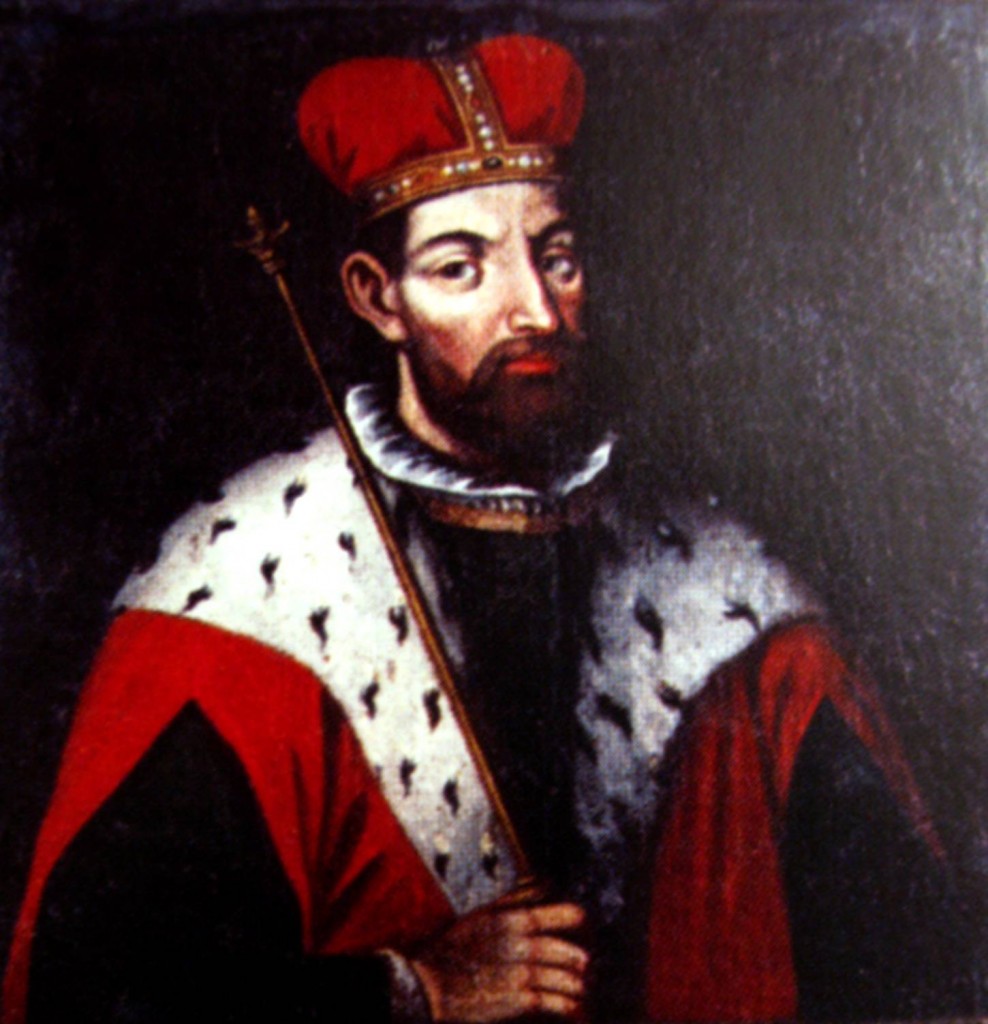
Gediminas as depicted in the Sapieha Genealogy in Kodeń, 1709
- Bookmark :
- Digg
- del.icio.us
- Stumbleupon
- Redit it
- Posted by - (0) Comment
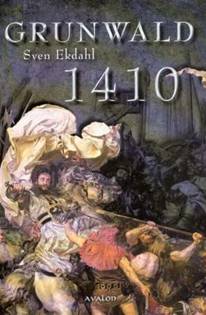
A crucial letter from the Middle Ages changes the interpretation of the history of Lithuania on an essential point
SVEN EKDAHL is Assistant Professor of History at Gothenburg University and Professor of Medieval History at the Polish-Scandinavian Research Institute in Copenhagen. He has published extensively on the history of the Teutonic Order in Prussia as well as treated Polish, Baltic, and Scandinavian themes.
Read more...
- Bookmark :
- Digg
- del.icio.us
- Stumbleupon
- Redit it
VilNews e-magazine is published in Vilnius, Lithuania. Editor-in-Chief: Mr. Aage Myhre. Inquires to the editors: editor@VilNews.com.
Code of Ethics: See Section 2 – about VilNews. VilNews is not responsible for content on external links/web pages.
HOW TO ADVERTISE IN VILNEWS.
All content is copyrighted © 2011. UAB ‘VilNews’.

 Click on the buttons to open and read each of VilNews' 18 sub-sections
Click on the buttons to open and read each of VilNews' 18 sub-sections 















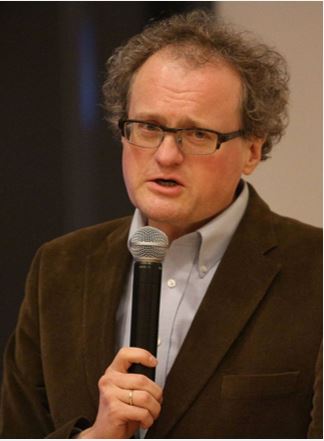
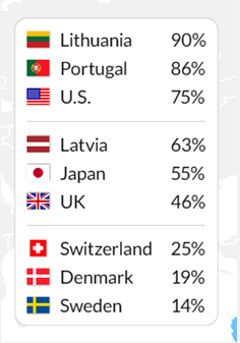
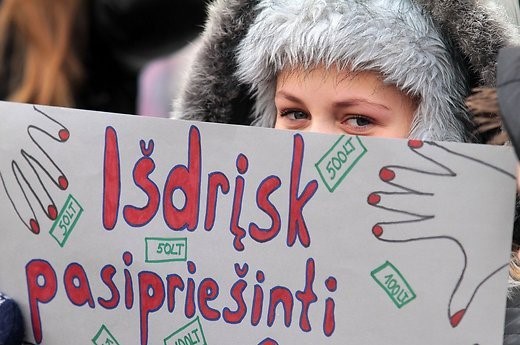


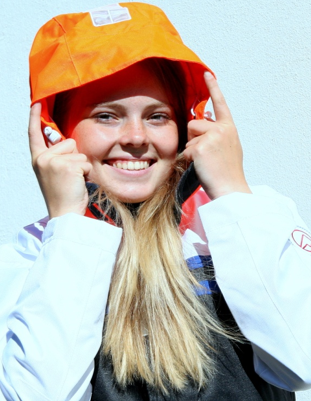
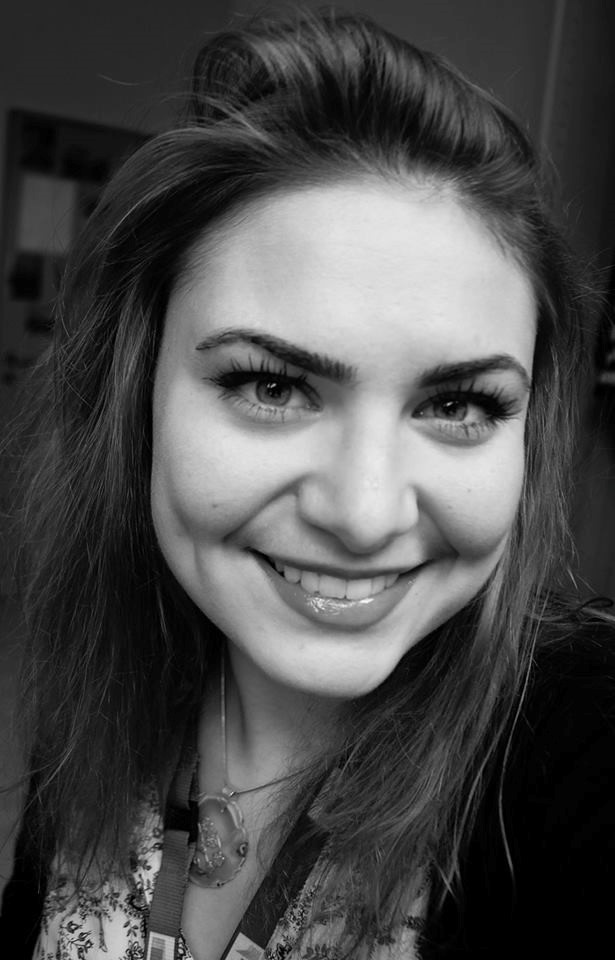
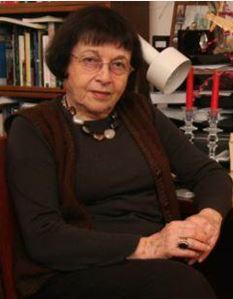
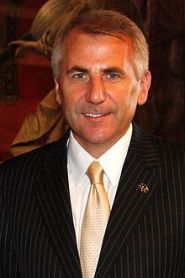
.jpg)
